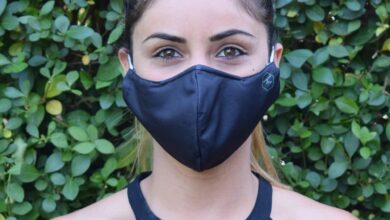
Dresses are a favorite item in the wardrobe of numerous fashionistas. From time to time, contrivers trial with new styles, styles and colors and offer a variety of options. In the party dresses summer 2021 season, the focus was on romantic dresses speckled with flower kids and decorated with a number of globules, sexy options, including translucent textures, models with thin strips, dresses with unanticipated necklines or an emphasis on the sconce line. In addition, the iconic rudiments of different decades have returned the length of the mini, which was so loved by fashionistas in zero, big shoulders from the 1980s and counterculturist- enthusiasm, which was adored by girls in the 1970s. For suckers of minimalism, there are laconic plain dresses, and bold fashionistas can try on mesh dresses.Vogue.ua has collected a companion with the most fashionable dresses of the spring-summer 2021 season.
Floral print
With the onset of heat, you want to fill your wardrobe with all feathers of flowery dresses. This spring there’s such an occasion, because in the collections of brands there are a lot of dresses with flowery beautifiers – from large kids to small field vanquishers. Valentino presented this season a series of translucent flowery dresses that will surely appreciate the romantic and voluptuous nature. Jason Wu showed a more practical interpretation of an everyday dress with a field pattern – the developer advises to wear it paired with a knitted cuff over the dress. Meanwhile, the Carolina Herrera collection reckoned on drama and presented black dresses with red tulip kids.
The length of the mini
The length of the mini conquered the catwalks of this season. Contrivers largely recognized the period of bottoms and docked skirts and dresses. Miu Miu offered a cute dress with a arc just above the midriff, Giambattista Valli showed an extremely short dress in the fashion of crochet, and David Koma decided for a attractive white mini, which is suitable for loud parties with the onset of heat.
Thin straps
A dress with thin strips is one of the sexiest trends this season. Exquisite strips, thin shafts and strips emphasize the fragility and fineness of the womanish figure. Just look at the Jacquemus collection and incontinently there’s a desire to buy all the clothes on thin strips, similar as this black knitted dress. In the Victoria Beckham collection, exquisite strips are the only thing that keeps an elegant silk dress, and in Dion Lee the whole image consists of them and crowds, thanks to which you can acclimate the depth of the necklines.
Minimalist
Minimalism is one of the leading trends of 2021. Numerous brands have abandoned various prints, multitudinous scenery and intricate outlines in favor of clean lines, laconic cut and natural tones. Dateless minimalist dresses have taken a big niche in contrivers’ collections. Sportmax showed an image that mimics a alternate skin, Boss bet on a maxi length polo dress, and Bevza presented a laconic ivory dress, in which you can go to the marriage.
1970s
Dresses darned in the fashion of crochet or macrame, torochki, tassels, patchwork, tie- color patterns and openwork inserts formerly again charmed the hearts of contrivers around the world. The focus of the spring-summer 2021 collections was on the bohemian images and aesthetics of the late 1970s. Zimmermann showed a white dress of delicate weaving with covers on the sleeves, Christian Dior sang the art of patchwork, and Gabriela Hearst showed an openwork dress, as if darned.
Translucent
Translucent dresses this spring are sure to appear in the wardrobe of every fashionista. It can be a light bohemian dress with long sleeves made of delicate silk, as in the Alberta Feretti collection, an intricate slip- dress worn over a transparent shirt, or an openwork image of organza, which Fendi offers to combine with a differing bodysuit and bright shoes.
Read also: Top 25 SolarMovie Alternatives in 2021
Sconces that barely look out
Still, in the new season contrivers suggest to go against outdated rules, If earlier to show undergarments was considered a bad tone. Now the emphasis on the sconce line in the form of an exposed bra shows a great mindfulness of current trends. You can choose dresses with a deep neckline and without fear wear a differing cuff under them or buy a ready- made result from brands. Our pets are in the Versace, Dolce & Gabbana, Victoria Beckham and Sportmax collections.
Volumetric shoulders
Images with an emphasis on the shoulder line are still popular among brands. Isabel Marant offered a flowery mini with a V-neckline and light shoulders, which the developer combines with Cossack shoes, and Alexander McQueen showed a shirt- cut dress withultra-voluminous sleeves, analogous to fish insensibility. Feel free to buy a dress with big shoulders, in 2021 they will be applicable.
Cutouts
We preliminarily talked about the sexiest image of this downtime – a dress with an open reverse. In the collections of brands there are all feathers of dresses with a voluptuous neckline on the reverse, which can be worn to different events depending on the occasion. Outfits with a instigative neckline are more left for evening events, but knitted dresses with a gracefully bare back can be used for everyday, for illustration, light blue dress Nanushka. Still, the fashionability of cutouts doesn’t end there. The contrivers liked this trend so much that they decided to embellish the dresses not only with unusual cuts on the reverse, but also unanticipated on the midriff, arms and shanks.
City
Dresses like fishing nets aroused the imagination of contrivers. This spring, a mesh dress is fashionable to wear on top of the case, which is analogous in color to the proprietor’s skin. Similar exemplifications can be plant in the Hermes and Anchorages 1961collections.However, Balenciaga offers a tableware mesh maxi length, which can be worn over black overalls and ankle thrills of the same color, If you want an evening interpretation.
Shlyarki
Sportful falls of ruffles and tiered slings this spring beautify dresses made in the stylish traditions of maximalism. However, suckers of the Marie-Antoinette style will be happy with the veritably look of dresses with lush skirts and multitudinous dresses, If girls who prefer strict and laconic dresses find solace in a minimalist outfit. Ulla Johnson showed off her romantic light-lavender civic outfit, while Philosophy di Lorenzo Serafini and Giambattista Valli decided for delicate white dresses that will be appreciated by unborn misters.




